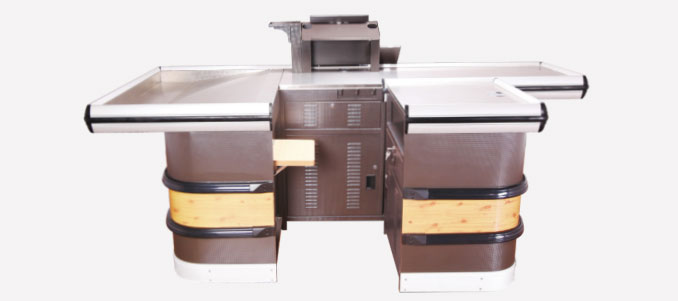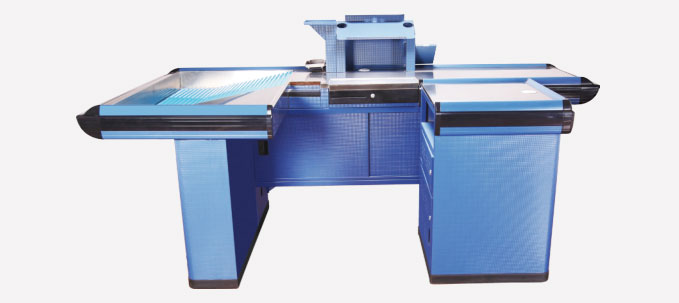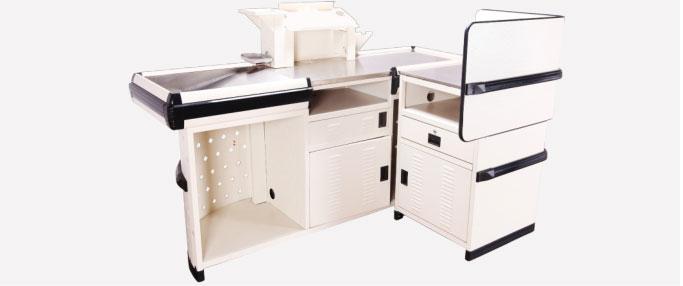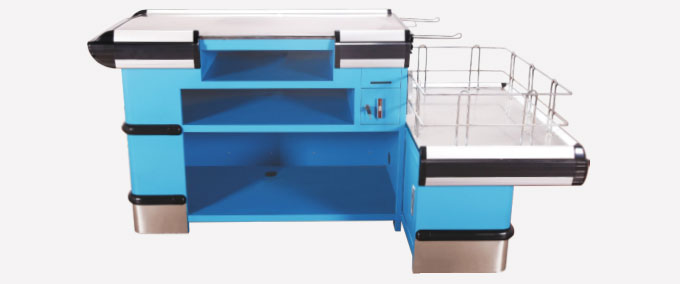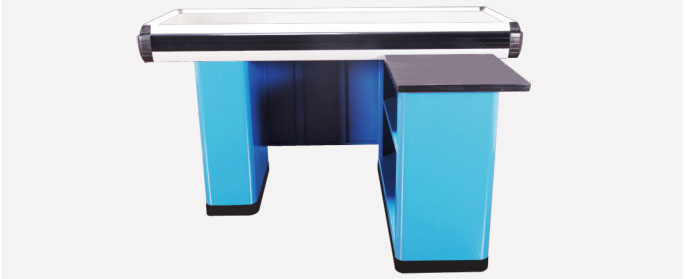July 31, 2025
How to Optimize Your Restaurant’s Checkout Counter for Maximum Efficiency
The Importance of a Well-Designed Checkout Counter in Restaurants
When it comes to running a successful restaurant, every detail matters. From the quality of your food to the ambiance of your dining area, everything contributes to the overall customer experience. However, one often overlooked aspect that can make or break a customer’s visit is the checkout counter. A poorly designed or inefficient checkout process can lead to long wait times, frustrated customers, and even negative reviews. On the other hand, a well-optimized checkout counter can streamline operations, improve customer satisfaction, and even boost your bottom line.
In this article, we’ll explore the key features and strategies for creating an efficient checkout counter for your restaurant. Whether you’re running a small diner or a large chain, these tips will help you create a seamless checkout experience that keeps your customers coming back for more.
Understanding the Role of the Checkout Counter
The checkout counter is more than just a place where customers pay their bills. It’s the final touchpoint in their dining experience, and it can leave a lasting impression. A well-designed checkout counter should:
– Provide a smooth and quick payment process.
– Ensure customer data security.
– Offer an opportunity for upselling or promoting loyalty programs.
– Reflect the overall branding and aesthetic of your restaurant.
Let me tell you, a checkout counter that fails to meet these expectations can turn an otherwise great dining experience into a disappointing one.
Key Features of an Efficient Checkout Counter
So, what makes a checkout counter efficient? Here are some essential features to consider:
1. Speed and Accuracy: Customers don’t want to wait in line for long periods, especially after they’ve finished their meal. A checkout system that processes payments quickly and accurately is crucial. Consider investing in a modern POS (Point of Sale) system that can handle multiple payment methods, including contactless and mobile payments.
2. Security: With the rise in credit card fraud and data breaches, ensuring the security of your customers’ information is paramount. Look for a POS system that offers end-to-end encryption and compliance with industry standards like PCI DSS.
3. Integration with Other Systems: Your checkout counter should seamlessly integrate with your restaurant’s other systems, such as inventory management, order tracking, and customer relationship management (CRM). This integration ensures that all aspects of your business run smoothly and efficiently.
4. User-Friendliness: Your staff should find the checkout system easy to use. A user-friendly interface reduces the likelihood of errors and speeds up the checkout process. Additionally, a system with a intuitive design can minimize training time for new employees.
5. Customization: Every restaurant is unique, and your checkout counter should reflect that. Look for a system that allows you to customize settings, such as adding tipping options, splitting bills, or offering discounts.
How to Choose the Right Checkout Counter for Your Restaurant
With so many options available, selecting the right checkout counter for your restaurant can be overwhelming. Here are some tips to help you make the right choice:
1. Assess Your Needs: Start by evaluating the specific needs of your restaurant. Consider the size of your establishment, the volume of transactions, and the types of payments you accept. For example, a small café might require a simpler system compared to a large restaurant with multiple locations.
2. Read Reviews and Ask for Recommendations: Don’t just rely on the sales pitch of the vendor. Read reviews from other restaurant owners who have used the system. You can also ask for recommendations from colleagues or industry associations.
3. Consider Scalability: Your restaurant may grow in the future, so it’s important to choose a checkout counter system that can grow with you. Look for a system that offers scalability options, such as adding more terminals or integrating new features as needed.
4. Check for Support and Maintenance: Even the best systems can encounter issues from time to time. Ensure that the vendor offers reliable customer support and regular maintenance to keep your system running smoothly.
The Future of Checkout Counters in Restaurants
The restaurant industry is constantly evolving, and so is the technology behind checkout counters. One of the biggest trends in recent years has been the adoption of self-service kiosks and mobile checkout options. These technologies allow customers to place orders and pay bills without the need for a cashier, reducing wait times and improving efficiency.
Another trend to watch out for is the integration of artificial intelligence (AI) and data analytics into checkout systems. These technologies can provide valuable insights into customer behavior, helping you make data-driven decisions to improve your business. For instance, AI can analyze sales data to identify popular menu items or peak hours, allowing you to optimize your inventory and staffing accordingly.
Moreover, the rise of contactless payments is expected to continue, driven by the increasing popularity of mobile wallets like Apple Pay and Google Pay. Ensuring that your checkout counter supports these payment methods can enhance the convenience and security of transactions for your customers.
Best Practices for Managing Your Checkout Counter
Once you’ve set up your checkout counter, it’s important to manage it effectively to ensure it continues to meet your customers’ needs. Here are some best practices to keep in mind:
1. Train Your Staff: Proper training is essential for maximizing the efficiency of your checkout counter. Ensure that all staff members are familiar with the system and can troubleshoot common issues.
2. Regular Maintenance: Regularly update your software and hardware to ensure that your system runs smoothly. This includes installing security patches, updating payment processors, and replacing worn-out equipment.
3. Monitor Performance: Use analytics tools to monitor the performance of your checkout counter. Look for metrics such as average transaction time, payment method breakdown, and customer satisfaction scores. This data can help you identify areas for improvement.
4. Be Prepared for High Volume: During peak hours or special events, your checkout counter may experience high volumes of transactions. Ensure that your system can handle the increased load without slowing down or crashing.
5. Gather Customer Feedback: Don’t underestimate the value of customer feedback. Regularly ask your customers for their opinions on the checkout process and use their insights to make improvements.
Conclusion
In conclusion, the checkout counter is a critical component of your restaurant’s operations. By investing in an efficient, secure, and user-friendly system, you can enhance the overall customer experience, streamline your operations, and ultimately drive business growth. Whether you’re upgrading your current system or setting up a new one, the tips and strategies outlined in this article will help you create a checkout counter that meets the needs of your restaurant and your customers.
Remember, the checkout counter is not just the end of a meal—it’s the last opportunity to leave a positive impression on your customers. Make it count!
Hot Product
GYF-090 Luxury Checkout Counter
admin2025-07-01T05:40:44+00:00July 1, 2025|0 Comments
Product Overview The GYF-090 Luxury Checkout Counter offers a balanced combination of elegance, durability, and smart spatial design. With a reference size [...]
GYF-089 Luxury Checkout Counter for Supermarket
admin2025-07-01T03:58:41+00:00July 1, 2025|0 Comments
Product Overview The GYF-089 Luxury Checkout Counter is a premium, full-size cashier desk designed for high-traffic supermarkets, hypermarkets, and retail chains. With [...]
GYF-088 Custom Luxury Checkout Counter
admin2025-07-01T03:50:22+00:00July 1, 2025|0 Comments
Product Overview The GYF-088 Luxury Checkout Counter is a flagship solution for retailers seeking an elegant, durable, and highly customizable front-end cashier [...]
GYF-087 Luxury Checkout Counter
admin2025-07-01T03:27:20+00:00July 1, 2025|0 Comments
Product Overview The GYF-087 Luxury Checkout Counter offers a compact yet premium solution for modern retail stores. With dimensions of 1600 × [...]
GYF-086 Luxury Checkout Counter
admin2025-07-01T03:17:16+00:00July 1, 2025|0 Comments
Product Overview The GYF-086 Luxury Electric Checkout Counter is designed to provide a perfect blend of modern design, space efficiency, and durability. [...]

